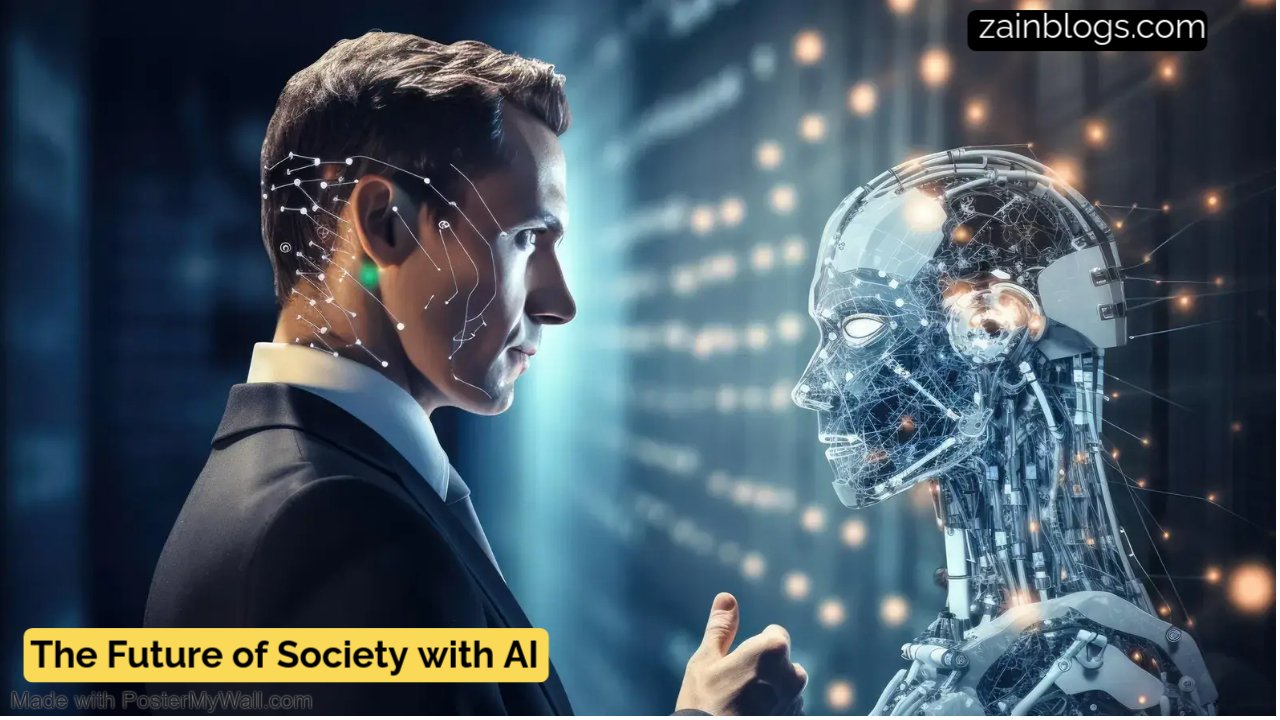The Future of Society with AI: Is It More Good or Harm?
The Future of Society with AI and also sparks heated debates about AI and its future ,This blog covered by zainblogs Artificial Intelligence is not a concept restricted to technological know-how fiction; it’s reshaping the way we stay, art work, and interact. From digital assistants like Siri to independent motors, AI’s speedy evolution is bringing exceptional changes to society. While its have an impact on holds huge functionality, it moreover sparks heated debates spherical its dangers and impact on humanity’s destiny. Will the Future of Society with AI revolutionize our society for the higher, or will it supply sudden harm? To make enjoy of this pivotal query, we want a balanced mind-set on AI’s guarantees and pitfalls. What is Artificial Intelligence (AI)? At its middle, AI refers to machines designed to simulate human intelligence. These structures use algorithms and information to research information, make alternatives, and enhance over the years. There are critical styles of AI: Over the past decade, enhancements in natural language processing (NLP), device studying, and robotics have delivered AI within the route of recognizing its whole functionality. Benefits of the Future of Society with AI The Future of Society with AI, AI is proving to be a effective device for solving complicated worrying conditions and enhancing numerous components of existence. Here are some of its maximum promising contributions: Revolutionizing Healthcare AI is remodeling healthcare: For example, AI systems like IBM’s Watson Health are supporting medical doctors make faster, The Future of Society with AI greater correct picks which can hold lives. Enhancing Education and Learning AI is redefining instructional reminiscences: These improvements make education extra inclusive and powerful, making sure that students of all levels thrive. Improving Environmental Sustainability AI is supporting efforts to deal with important environmental demanding conditions: By leveraging AI, organizations and governments can located into impact answers that shield the environment. Advancing Business and Innovation AI supercharges agency operations: Examples encompass tool like Salesforce Einstein, which lets in companies make statistics-driven alternatives successfully. Risks and Challenges of AI While AI holds big promise, it additionally brings notable dangers that the Future of Society with AI want to control thoughtfully. Job Displacement and Unemployment In The Future of Society with AI ,the upward thrust of AI-pushed automation is reworking industries: However, with investment in retraining applications and Skill improvement, employees can transition into roles that require modern and analytical competencies in which AI turns into a collaborative companion. Privacy and Security Concerns AI calls for large quantities of records to characteristic correctly, raising concerns approximately private privateness: Governments need to installation more potent guidelines to everyday records and prevent misuse. Bias and Discrimination in AI Systems AI structures can inherit biases from the facts they are knowledgeable on: To clear up this, builders want to prioritize transparency and inclusiveness in AI format in the Future of Society with AI. Ethical Dilemmas and Moral Questions AI will growth deep ethical problems: Building ethical frameworks and human oversight into AI structures is critical to addressing those issues. Will AI Replace Human Intelligence or Enhance It? A pressing philosophical question divides specialists—is AI destined to surpass human intelligence, or can it complement humanity? Human-AI Collaboration AI has awesome capability to decorate human creativity and trouble-solving via collaboration: Such partnerships display how the Future of Society with AI can act as a precious incredible buddy to humanity. Risks of AI Surpassing Human Intelligence The concept of fantastic intelligence, wherein AI outstrips human competencies, poses existential risks: This highlights the need for precautionary measures in the Future of Society with AI improvement to make certain it stays aligned with human values. Preparing for the Future of Society with AI To make sure AI benefits humanity, proactive steps are essential: Governments, tech leaders, and corporations ought to artwork collectively to shape an AI-powered global responsibly. AI’s Dual Role as Humanity’s Greatest Threat or Opportunity AI has delivered super upgrades at the equal time as elevating valid fears about its impact. Whether we view it as a boon or a chance is primarily based absolutely upon on how we pick out out out to wield it. While dystopian narratives dominate headlines, there are endless examples of AI solving troubles, growing financial possibilities, and improving lives. The Future of Society with AI lies in our hands, and with careful stewardship, we’re capable of make sure it turns into a tool for powerful exchange in preference to a curse. If you are excited to sign on within the AI revolution, start understanding the manner it influences your existence and company nowadays. Let’s find out the way to make the Future of Society with AI artwork for the betterment of all. Frequently Asked Questions (FAQs) 1-What is the maximum critical advantage of AI for society? AI’s maximum big advantage lies in its capability to beautify stylish normal normal normal overall performance and innovation in some unspecified time in the future of severa sectors. From transforming healthcare to fixing complex international issues like climate change, AI’s functionality to decorate extraordinary of existence is unmatched at the same time as harnessed responsibly. 2-Will AI in the end update all human jobs? While AI and automation will truly exchange the individual of hard art work, it’s now unlikely to replace all human jobs. Instead, it will result in the advent of latest roles requiring talents in AI manage, creativity, and emotional intelligence. The Future of Society with AI Retraining and Skill enhancement obligations are key to adapting to this transition. three-Is artificial intelligence proper for society? Artificial intelligence brings splendid blessings to the Future of Society with AI, at the same time as superior and used responsibly. AI technology decorates productiveness, beautifies healthcare diagnostics, assist in handling environmental demanding conditions, and provides innovative answers for training and studies. However, the societal impact of AI is based cautiously on ethical implementation, transparency, and equity. By addressing biases and ensuring equitable get proper of get proper of entry to to, The Future of Society with AI can … Read more









